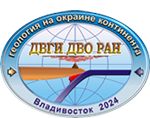Zonal Diatom Scale of the Continental Neogene in Primorye (Most Southern Territory of the Russian Far East)
Число скачиваний: 374
7. Algae_2019_eng.pdf
Pushkar V.S., Likhacheva O.Yu., & Usoltseva M.V.
International Journal on Algae, 2019, 21(2): 163–176
ABSTRACT: A significant stratigraphic and micropaleontological problem exists in the development of high-resolution biostratigraphic scales necessary when collecting basic data to construct a modern theory of Biospheric Stratigraphy and in determining the chronozone as a main operation unit. The chronozone should reflect general geobiological events which led to various conditions using the Paleobiosphere, which is a unique instrument used to mimic conditions of the ancient earth. The development and substantiation of zonal continental scales, which also include
information on geobiological events, lag behind modern stratigraphy requirements The author’s actual materials on the Far East Neogene diatom stratigraphic distribution allow us to decide this problem. The early Miocene is characterized by the intensive development of the Aulacoseira, Alveolophora, Ellerbeckia, Pseudoaulacosira, and Melosira genera. The global climate optimum has appeared between the early and middle Miocene. Many taxa of diatoms as well as the high species diversity of centric diatoms appeared and developed during the Middle–Late Miocene stage of diatom evolution. The Pliocene stage was marked by the appearance of the genera Stephanodiscus, Cyclotella, and Pliocaenicus. The greatest extinction of moderately warm-water species of centric births at the level of 3.6 million years corresponds to the growth and expansion of ice caps at both poles of the planet.
KEY WORDS: Neogene, diatoms, paleoclimate, stratigraphy, tectonic, the Far East







